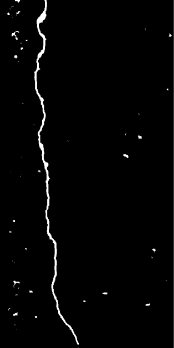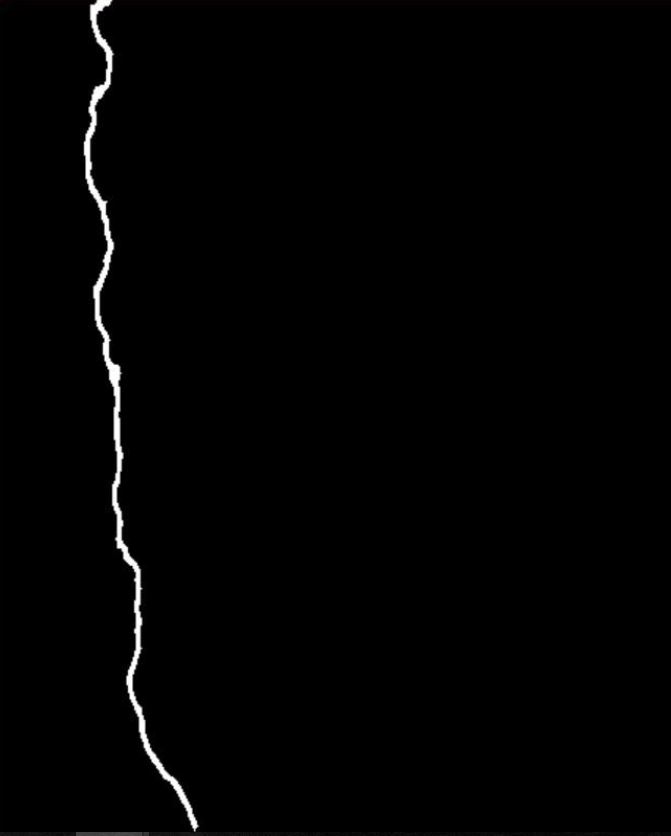Hi,
an easy approach could be:
1) remove the inhomogeneous background illumination
apply a big gaussian bluring and substract the original image from the blured one.

2) Apply e.g. e Sobel edge detection and a morphological close

3) remove the noise using blob analysis (e.g. remove regions with small areas)
Best
Edit:
In principle you have to convert the image between 0 and 1 before GaussianBlur. Additionally to get better results you also can apply a non-maximal suppression after sobel.
For a copy paste solution here we go:
(code is partly from here)
import cv2
import math
import numpy as np
import scipy.ndimage
def orientated_non_max_suppression(mag, ang):
ang_quant = np.round(ang / (np.pi/4)) % 4
winE = np.array([[0, 0, 0],[1, 1, 1], [0, 0, 0]])
winSE = np.array([[1, 0, 0], [0, 1, 0], [0, 0, 1]])
winS = np.array([[0, 1, 0], [0, 1, 0], [0, 1, 0]])
winSW = np.array([[0, 0, 1], [0, 1, 0], [1, 0, 0]])
magE = non_max_suppression(mag, winE)
magSE = non_max_suppression(mag, winSE)
magS = non_max_suppression(mag, winS)
magSW = non_max_suppression(mag, winSW)
mag[ang_quant == 0] = magE[ang_quant == 0]
mag[ang_quant == 1] = magSE[ang_quant == 1]
mag[ang_quant == 2] = magS[ang_quant == 2]
mag[ang_quant == 3] = magSW[ang_quant == 3]
return mag
def non_max_suppression(data, win):
data_max = scipy.ndimage.filters.maximum_filter(data, footprint=win, mode='constant')
data_max[data != data_max] = 0
return data_max
# start calulcation
gray_image = cv2.imread(r'path ... ', 0)
with_nmsup = True #apply non-maximal suppression
fudgefactor = 1.3 #with this threshold you can play a little bit
sigma = 21 #for Gaussian Kernel
kernel = 2*math.ceil(2*sigma)+1 #Kernel size
gray_image = gray_image/255.0
blur = cv2.GaussianBlur(gray_image, (kernel, kernel), sigma)
gray_image = cv2.subtract(gray_image, blur)
# compute sobel response
sobelx = cv2.Sobel(gray_image, cv2.CV_64F, 1, 0, ksize=3)
sobely = cv2.Sobel(gray_image, cv2.CV_64F, 0, 1, ksize=3)
mag = np.hypot(sobelx, sobely)
ang = np.arctan2(sobely, sobelx)
# threshold
threshold = 4 * fudgefactor * np.mean(mag)
mag[mag < threshold] = 0
#either get edges directly
if with_nmsup is False:
mag = cv2.normalize(mag, 0, 255, cv2.NORM_MINMAX)
kernel = np.ones((5,5),np.uint8)
result = cv2.morphologyEx(mag, cv2.MORPH_CLOSE, kernel)
cv2.imshow('im', result)
cv2.waitKey()
#or apply a non-maximal suppression
else:
# non-maximal suppression
mag = orientated_non_max_suppression(mag, ang)
# create mask
mag[mag > 0] = 255
mag = mag.astype(np.uint8)
kernel = np.ones((5,5),np.uint8)
result = cv2.morphologyEx(mag, cv2.MORPH_CLOSE, kernel)
cv2.imshow('im', result)
cv2.waitKey()




